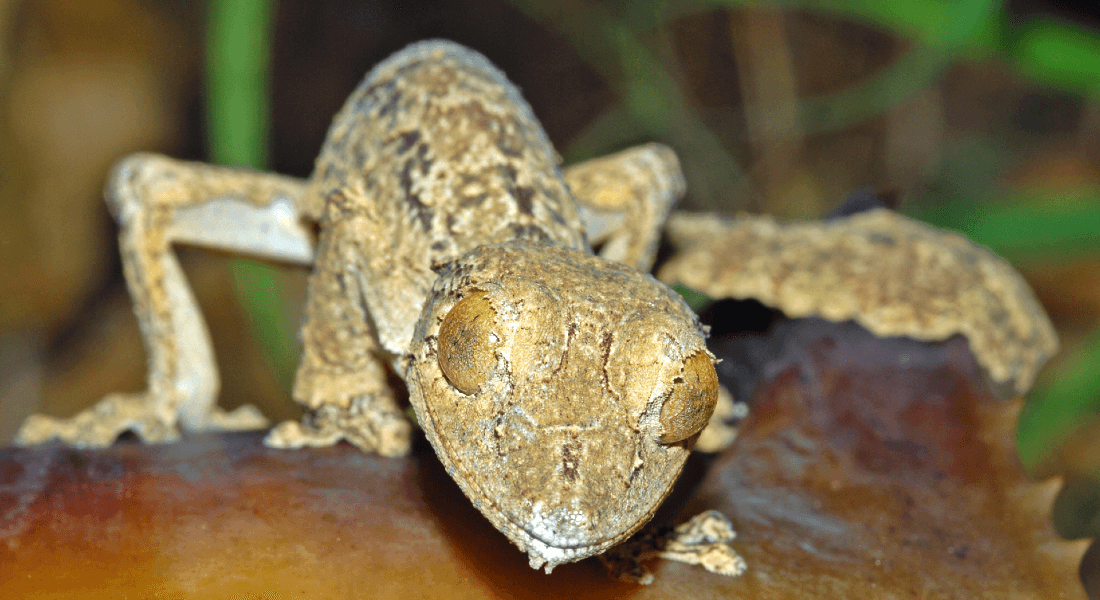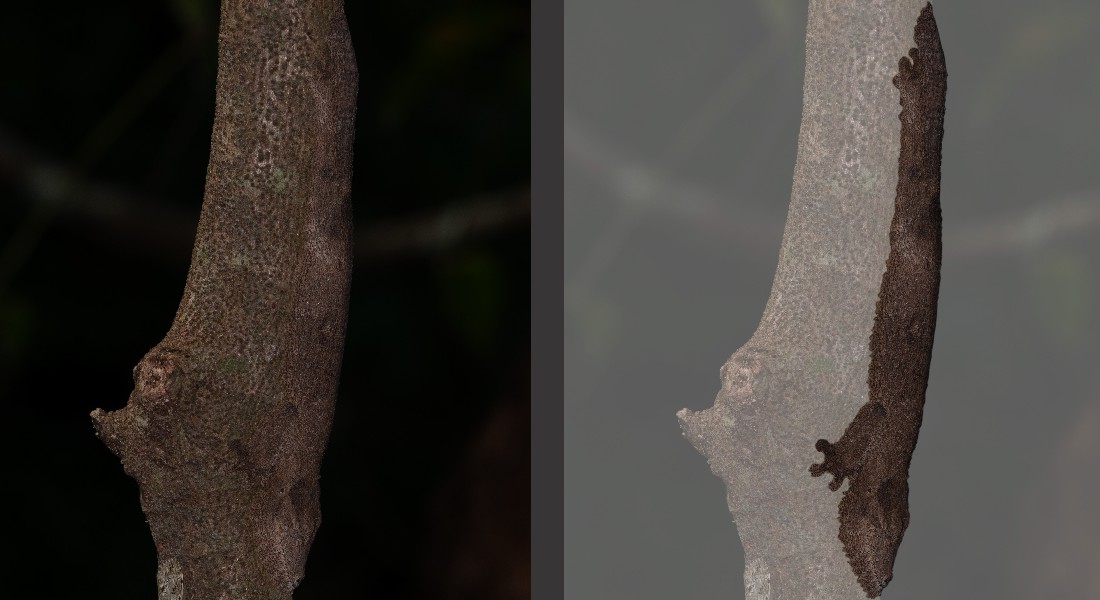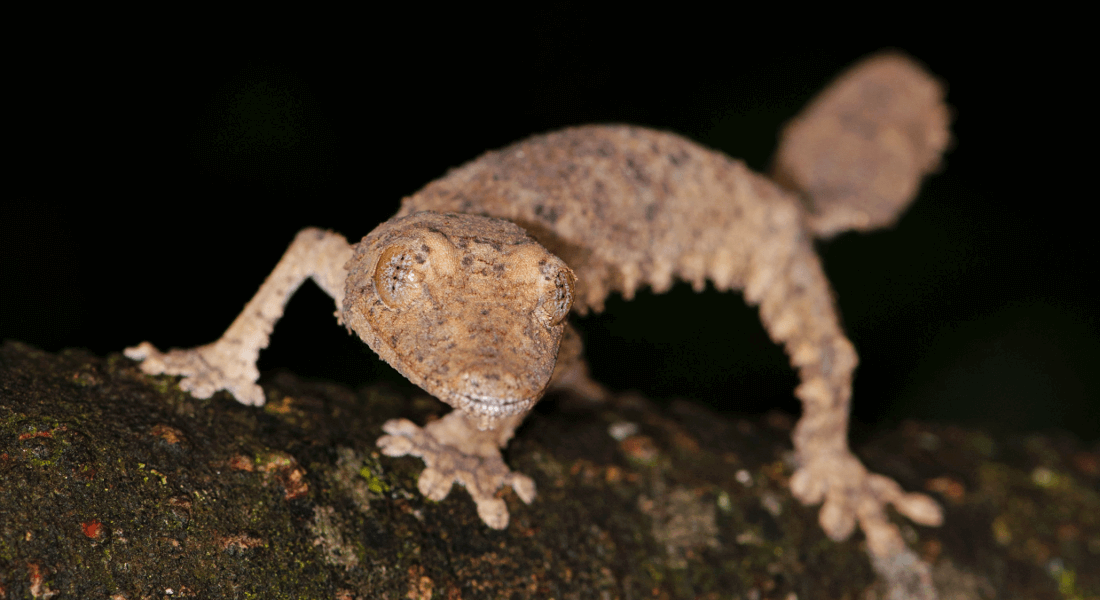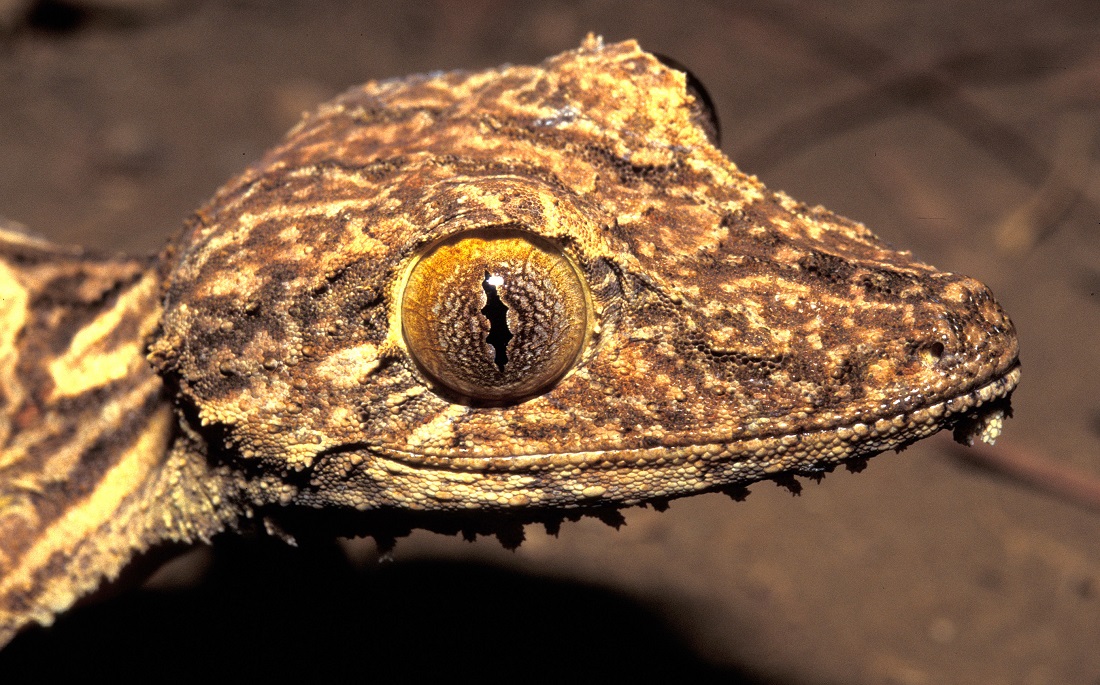Disguised as tree bark and another species: Newly discovered gecko is a master of disguise
An international team of scientific researchers, among them a University of Copenhagen herpetologist, has discovered a new gecko species in Madagascar that resembles tree bark during the day and had been mistaken for a related gecko for decades. The animal is endangered, and the researchers are now making an unusual appeal to exotic pet hobbyists: "Help us learn more about this endangered animal".

At night, it wakes to prowl among the twigs of the understory, scouting for invertebrate prey like insects and other creepy crawlies. By day, the nocturnal hunter is a master of disguise. It hides in plain sight, on tree trunks, where it seamlessly blends its flattened, fringed body with the colors of tree bark, making it nearly impossible to spot.
Leaf-tailed geckos beat chameleons when it comes to mastering camouflage. Uroplatus garamaso, a new species from northern Madagascar, is no exception. The gecko species disguises itself so well that it has taken twenty-three years for scientists to accord it its own name and place on the tree of life.

"Leaf-tailed geckos are amazing animals. They are so strange and look completely different than other reptiles. We began to suspect that this Uroplatus from northern Madagascar was a different species more than twenty-three years ago. Since then, we’ve conducted many expeditions and studied it in greater detail. At long last, we are now certain that it is a new species," says Dr. Mark D. Scherz, curator of herpetology at the Natural History Museum of Denmark and a co-author of the article that described the find last month. Dr. Scherz found the new gecko in three different locations of northern Madagascar.
The research team collected data on the genetics, morphology and distribution of the species. And on August 15, the discovery became official in the scientific journal Salamandra.
Revealed by its pink tongue
One challenge for the scientists has been that U. garamaso is remarkably similar to another leaf-tailed gecko, Uroplatus henkeli, with which it has been confused until now. Over time however, the scientists were able to find characteristics that distinguished between the two species.
"The decisive leap was the discovery that the tip of the new species’ tongue is pink, unlike its relative, U. henkeli, which has a black tongue. This was key in determining that U. garamaso is a distinct species," explains Dr. Scherz.
At 20 cm in length, the new species is also slightly smaller than U. henkeli. And, it has a narrower tail.
The new species is the latest in a series of new Uroplatus geckos found in Madagascar in recent years. However, U. garamaso is a rare species consisting of few individuals and is considered by scientists to be severely endangered. It is also a species that we still know very little about.

"We are close to completing the taxonomic inventory of the genus, but this is only the beginning of our understanding of their evolution and ecology," says Dr. Scherz.
"The mouth color, which has been so useful in identifying different species, has a completely unknown function. There is much that we still don't know about these geckos, from their broader evolutionary relationship to their behavior," says the researcher.
Asking pet hobbyists for help
Endangered animals exported as pets are usually something that is either strictly illegal or at least highly regulated – and often a threat to vulnerable species.

In the case of U. garamaso, which has been in the pet trade for more than 20 years in the belief that it was its relative U. henkeli, the opposite is actually true.
The scientists behind the gecko discovery stress that the species is severely endangered and that very little is known about it. They also recommend initiating more long-term field studies for selected populations of leaf-tailed geckos. In the long term, breeding programmes may also be necessary to preserve the rare species.
But in the meantime, they believe it to be an advantage for the little creature if pet hobbyists are allowed to continue keeping the animals, to help learn more about their way of life and needs. This knowledge may be crucial for future attempts to save the species.
As such, the researchers call for the continued permission for a small number of the geckos to be exported under the Malagasy CITES quota system, which governs the wildlife trade.
"It will give private pet hobbyists the chance to contribute to our understanding of the life history and behavior of these fascinating geckos," says Dr. Scherz, who, along with his research colleagues, encourages hobbyist owners of the animal to continue documenting their experiences with them.
"It is important that they continue to publish their experiences with regards to the keeping and breeding of these geckos. As well as potential failures, because this kind of data will be crucial if conservation breeding programs need to be established in the future," says Dr. Scherz.
About the research:
In addition to Frank Glaw of the Bavarian State Collection of Zoology in Munich, who led the group, the following researchers contributed to the discovery:
- Jörn Köhler of Hessisches Landesmuseum, Darmstadt
- Fanomezana Mihaja Ratsoavina and
- Achille Philippe Raselimanana of the University of Antananarivo in Madagascar
- Angelica Crottini from the University of Porto
- Wolfgang Böhme from Research Museum Alexander Koenig, Bonn
- Philip-Sebastian Gehring and
- Miguel Vences of Technische Universität Braunschweig
And of course,
- Mark D Scherz, from the Natural History Museum of Denmark, at the University of Copenhagen
Contact
Mark D. Scherz
PhD
Curator of Herpetology at the Natural History Museum of Denmark
University of Copenhagen
mark.scherz@snm.ku.dk
+45 42 55 95 88
Kristian Bjørn-Hansen
Journalist and Communications Officer
The Faculty of Science
University of Copenhagen
kbh@science.ku.dk
+45 93 51 60 02.
